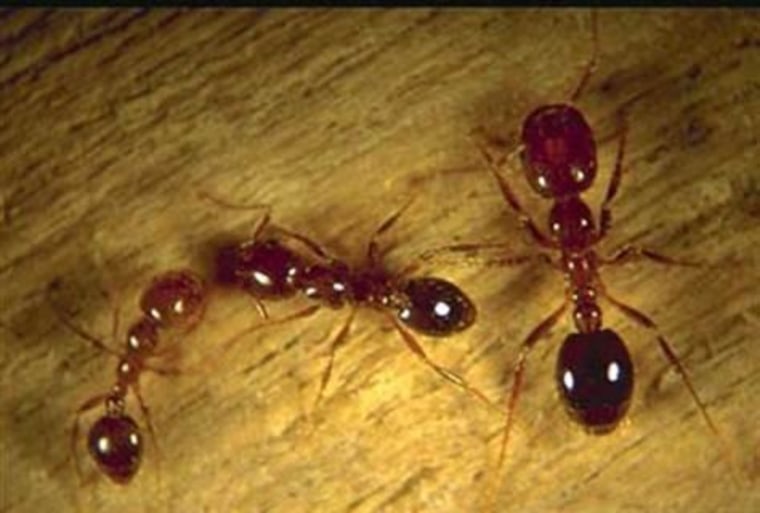By Eric Niiler
Much of the South has been living with fire ants for decades, and most youngsters there know to avoid trampling their giant underground nests unless they are looking for a swarm of painful bites. It turns out that these pesky insects are extremely good at running through tunnels without clobbering each other and even using their antennae as extra limbs.
And researchers believe these new findings about their curious locomotion could give engineers lessons for building automated search-and-rescue robots designed to hunt for human victims trapped underground.
Scientists at Georgia Tech have been studying fire ants as they scurry through their nests, some of which can hold up to 100,000 individuals and become evacuated in minutes if they are flooded with water or attacked by larger predators. The ants are an invasive species, brought to the United States from South America where their native habitat is often subject to natural cycles of floods.
Robot Ants Mimic a Real Colony
After several years of watching ants in two-dimensional and three-dimensional nests constructed in his laboratory, Nick Gravish, a postdoctoral student in the Department of Physics, found that tight spaces and jam-packed passageways didn’t seem to bother them. In fact, with a top speed of 9 body lengths per second, they are basically sprinting past their fellow drones or workers inside the colony.
"We were so surprised to see them move so fast," said Gravish, first author on a study appearing today in the Proceedings of the National Academy of Sciences. "And their motion was filled with slips and missteps. You get a sense that slipping and falling is not a problem. We see that ants can run over the top of each other, and lift each other up. They can scramble as fast as possible and there’s no penalty for that."
Gravish and collaborators professor Daniel Goldman and Michael Goodisman, and researcher Daria Monaenkova, used X-ray tomography to study tunnels the ants built in the test chambers. They also used video tracking equipment to watch them move through tunnels made between two clear plates. This scientific ant farm was mounted on an air piston which was fired, dropping the maze so the ants would lose their footing and fall. The ants used their antennae as extra limbs to stop their descent. Nobody had really seen them doing that before, he said.
The same kind of crawling and falling movements will likely be faced by search-and-rescue robots in the future.
Run! Top 5 Fastest Robots to the Rescue
"We're very interested in how the next generation of robotics, which is going to be at the millimeter scale, will move through torturous complex environments," he said. "These ants are a good system to look at locomotion and this is one of the first studies to look at locomotion of ants in their own environment."
However, one robotics expert agreed that studying insects like ants can give good clues for building some kinds of autonomous devices, but cautioned not to be too optimistic that engineers can duplicate what nature has done over millions of years.
"The characteristics of the animals and response of the (robot) sensors are typically so different that it is problematic to just copy what you see in their behavior to run it on the robot," said Achim Lilienthal, director of the Mobile Robot and Olfaction Laboratory at the University of Orebro in Sweden.
Lilienthal recently build a "gas-bot" that can follow traces of methane escaping from a landfill using special laser sensors, and is working on problems of robot sensing and smell.
"The world looks very different for the robot," he said.
